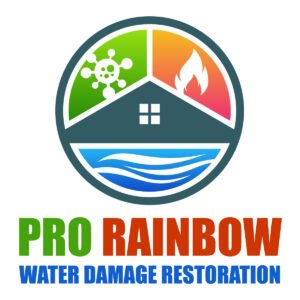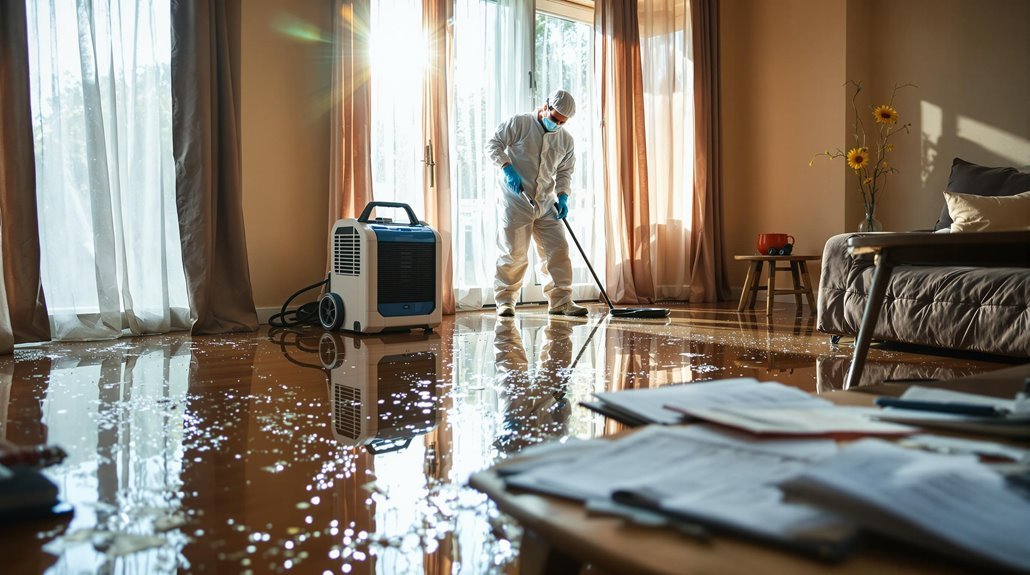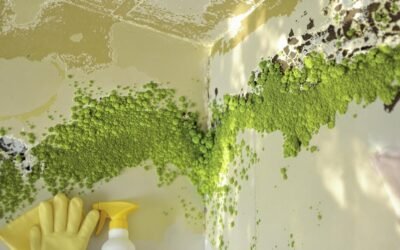When dealing with water damage restoration and insurance coverage, it's essential you understand the types of water damage and how your policies respond. Homeowner's insurance often covers internal damages but may exclude flooding, requiring separate flood policies for thorough protection. Be aware of your coverage limitations, including exclusions that could affect claims. The claim process involves notifying your insurer, gathering documentation, and tracking your claim's progress. Moreover, implementing preventive measures can mitigate future risks. With these insights, you can better navigate the complexities of water damage and insurance, setting the stage for more detailed exploration of your options.
Key Takeaways
- Understand the different types of water damage—clean, gray, and black—as they influence remediation and insurance coverage options.
- Review your homeowner's insurance policy for exclusions and coverage limits, especially regarding flooding, to avoid unexpected financial burdens.
- Separate flood insurance may be necessary in flood-prone areas to ensure comprehensive protection against external water damage.
- Document water damage thoroughly, including photos and repair estimates, to support your insurance claim and expedite the process.
- Regularly maintain drainage systems and check plumbing to prevent water damage and reduce potential claims on your insurance policy.
Understanding Water Damage Types
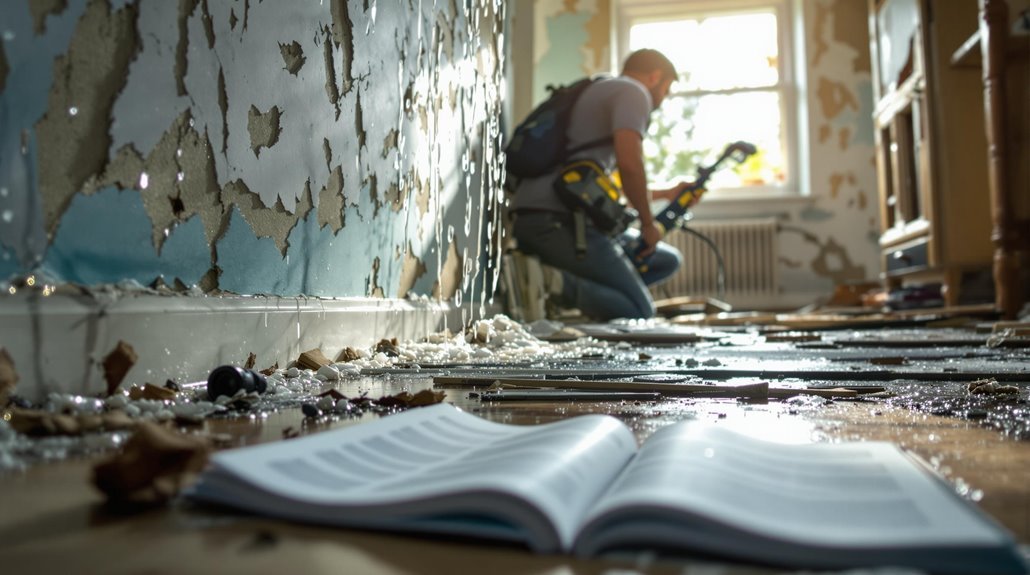
When you encounter water damage, understanding the different types can greatly affect how you respond and restore your property. Fundamentally, water damage falls into three categories: clean water, gray water, and black water. Clean water typically comes from sources like pipe bursts, which are relatively straightforward to address. Gray water, containing contaminants, might arise from washing machines or dishwashers. Finally, flood damage often involves black water, which is highly contaminated and poses health risks. Identifying the type of water damage you're dealing with is vital for proper remediation. Each type requires specific cleaning and restoration techniques, so knowing the distinctions helps you mitigate further damage and guarantees effective recovery of your property. Additionally, rapid response is crucial to minimize further damage and improve overall recovery outcomes.
Insurance Policies Overview
Understanding the different types of insurance policies is essential for protecting yourself against water damage. You need to be aware of coverage limitations and how they might affect your claim. Knowing the claim process steps can help you navigate your options effectively when disaster strikes. Additionally, understanding the importance of professional restoration can significantly influence the outcome of your insurance claim.
Types of Insurance Policies
Maneuvering through the terrain of insurance policies can be challenging, especially when it comes to water damage restoration. Understanding the different types of insurance policies is essential for homeowners. Primarily, you'll encounter two main categories: homeowner's insurance and flood insurance. Homeowner's insurance typically covers water damage from internal sources, while flood insurance is specifically designed for damage resulting from external flooding.
| Policy Type | Coverage Focus | Key Considerations |
|---|---|---|
| Homeowner's Insurance | Internal water damage | May not cover flooding; check specifics |
| Flood Insurance | External flooding | Often required in flood-prone areas |
| Homeowner's Liability | Liability for water-related incidents | Protects against claims from others |
Coverage Limitations Explained
While steering through the complexities of insurance policies, it's vital to recognize that coverage limitations can greatly impact your financial protection in the event of water damage. Many policies include coverage exclusions, which can leave you vulnerable. For instance, damage from flooding may not be covered under standard homeowners' insurance, requiring separate flood insurance. Moreover, policy limits define the maximum amount your insurer will pay for a claim. Knowing these limits is significant, as they can determine your out-of-pocket expenses after water damage occurs. Always review your policy details to identify any exclusions or limits that might affect your coverage. Being informed helps you make better choices and guarantees you're adequately protected against potential financial loss.
Claim Process Steps
After recognizing coverage limitations, the next step is to navigate the claims process effectively. Understanding the claim process is vital to guarantee you receive the compensation you deserve. Here are the steps to follow:
- Notify Your Insurer: Contact your insurance company as soon as possible to report the water damage.
- Gather Claim Documentation: Collect all necessary documentation, including photos, repair estimates, and any relevant receipts.
- Submit Your Claim: Complete the claim forms provided by your insurer, making certain all documentation is included.
- Track the Claim Timeline: Stay in communication with your insurer to monitor the progress of your claim and address any required follow-up actions.
Coverage for Water Damage
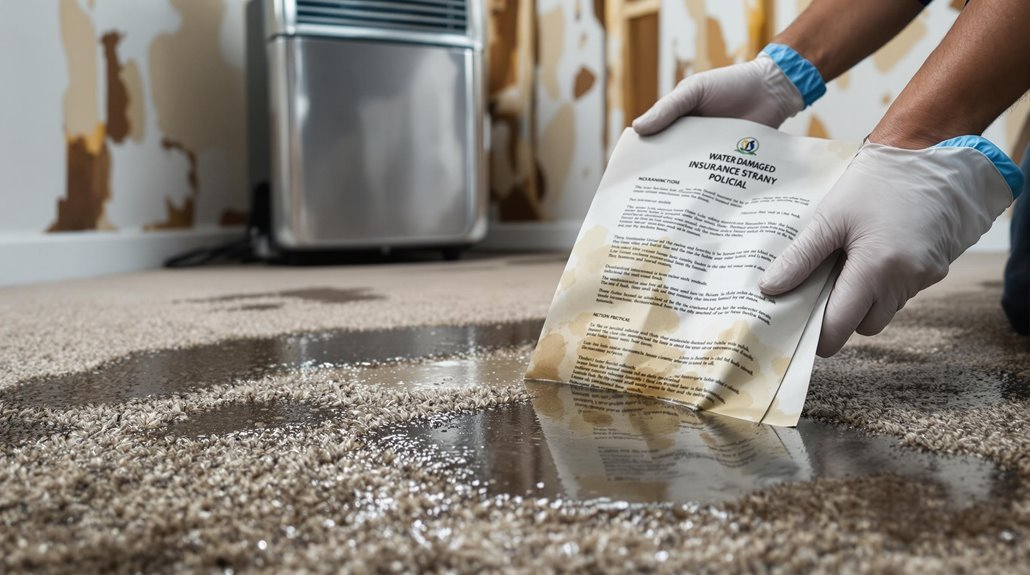
Understanding coverage for water damage is crucial for homeowners, as not all insurance policies are created equal. You need to know what your policy includes to effectively manage potential insurance claims. Below is a breakdown of common coverage types regarding water damage:
| Coverage Type | Description | Common Exclusions |
|---|---|---|
| Sudden Events | Covers unexpected water issues, like burst pipes | Gradual leaks, lack of maintenance |
| Flood Insurance | Specifically for flood-related damage | General water damage from plumbing |
| Sewer Backup | Addresses damage from sewage overflow | Damage from natural disasters |
Filing a Claim Process
Once you recognize your coverage for water damage, knowing how to file a claim is the next step in the process. To navigate this efficiently, follow these key steps:
- Gather Claim Documentation: Collect photographs, receipts, and any relevant correspondence.
- Contact Your Insurer: Notify your insurance provider about the damage as soon as possible.
- Meet the Insurance Adjuster: Schedule a time for the adjuster to assess the damage and provide an estimate.
- Submit Your Claim: Complete the necessary forms and submit your claim documentation promptly to avoid delays.
Understanding this process can promote a smoother claim experience, ensuring that you receive the coverage you're entitled to for your water damage restoration needs.
Steps After Water Damage
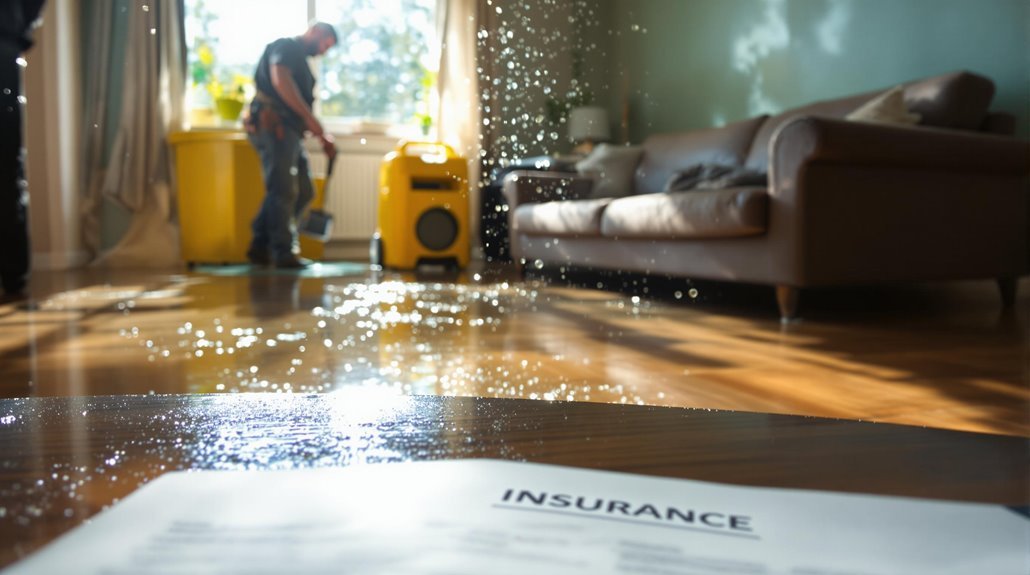
When you experience water damage, taking immediate action is vital to minimize loss and prevent further complications. First, confirm your safety by turning off utilities if necessary. Next, assess the extent of the damage and document it with photos for insurance purposes. Contact your insurance company to start the claims process. Then, reach out to professional restoration services for an emergency response. These experts will effectively extract water, dry affected areas, and prevent mold growth. It's imperative to act swiftly, as prolonged exposure to moisture can lead to severe structural damage and health risks. Following these steps will help you manage the situation more effectively and promote a smoother recovery process.
Preventive Measures for Homeowners
Although water damage can occur unexpectedly, homeowners can take several proactive steps to greatly reduce their risk. Implementing these preventive measures can help safeguard your property:
- Inspect and maintain drainage systems: Verify gutters and downspouts are clear and directing water away from your foundation.
- Install moisture barriers: Use vapor barriers in crawl spaces and basements to prevent humidity buildup and water infiltration.
- Check plumbing regularly: Look for leaks in pipes, faucets, and appliances, addressing any issues promptly.
- Landscape strategically: Grade your yard away from the home to prevent water pooling near the foundation.
Conclusion
Steering through water damage restoration is like guiding a ship through turbulent waters. With the right insurance coverage as your anchor, you can weather the storm. Understanding the types of water damage, knowing your policy, and following the claim process are essential navigational tools. After the flood, taking preventive measures will help guarantee your home stays afloat. By being proactive and informed, you can safeguard your haven against future tempests, steering towards calmer seas of security and peace of mind.
